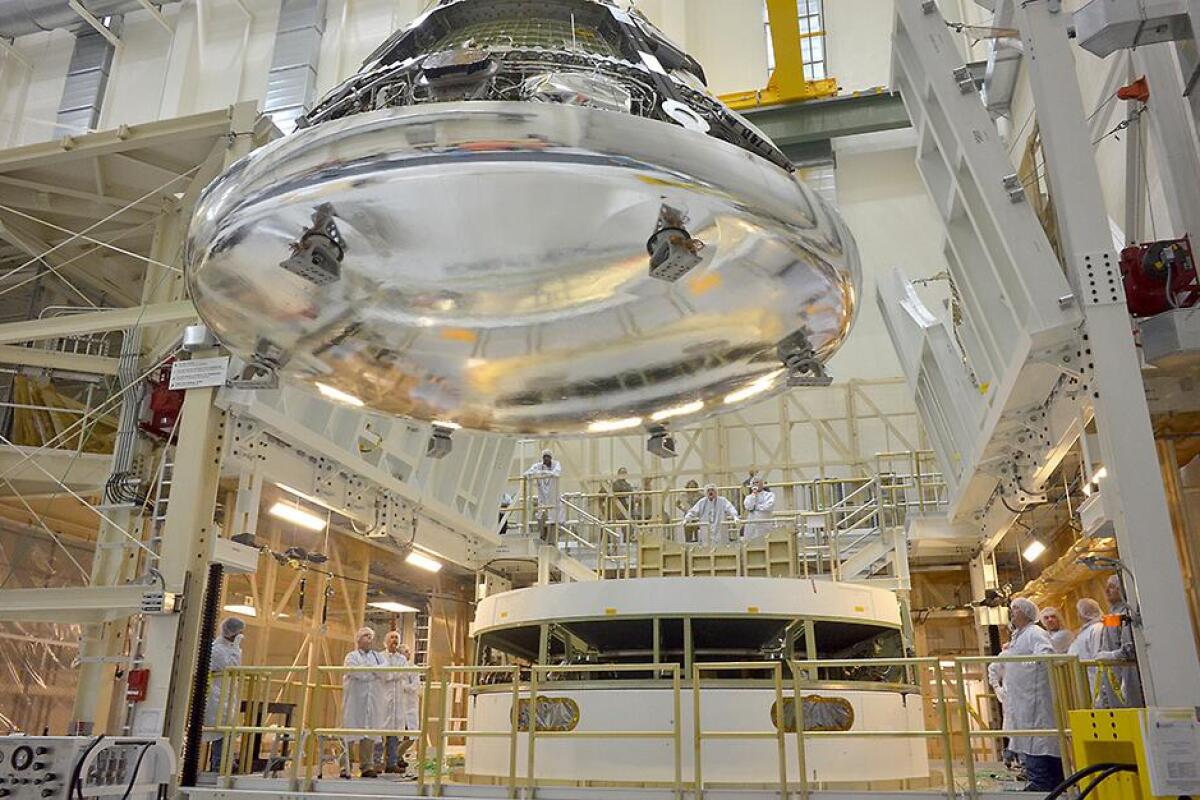NASA scientists have installed the largest heat shield ever created for the intention of atmospheric re-entry, onto the crew module of its next generation spacecraft, Orion. The shield, made of the same base material as that which protected Apollo-era astronauts from re-entry conditions over four decades ago, is set to be tested to the extreme later this year as Orion's maiden flight blasts off.
The Orion spacecraft is set to be the first deep-space vehicle capable of extending manned space flight to destinations such as Mars and beyond. For this to be possible, Orion must boast a heat shield capable of withstanding the intense pressures of re-entry into Earth's atmosphere. "It is extremely exciting to see the heat shield in place, ready to do its job," states Mark Geyer, program manager for the Orion spacecraft. "The heat shield is such a critical piece, not just for this mission, but for our plans to send humans into deep space."
To conquer this mammoth challenge, NASA scientists have installed a five-meter (16-ft) wide heat shield onto the crew module of the Orion spacecraft. The shield was built by Lockheed Martin and is constructed from Avcoat ablator, which is comprised of silica fibers with an epoxy-novalic resin filled in a fiberglass-phenolic honeycomb.
The heat shield is protected from the frigid temperatures of outer space by a coating of reflective silver tape, and upon contact with Earth's atmosphere, is designed to slowly erode, channeling heat away from the crew module in the process. The protective measure will need to withstand temperatures exceeding 4,000 ºF (2,204 ºC) during Orion's maiden test flight, roughly five times the heat experienced by missions returning from the International Space Station (ISS).

NASA selected Avcoat ablator as the main component for Orion's heat shield back in April 2009. Previously used as the material of choice for the Apollo missions, Avcoat was one of eight options considered to protect NASA's next-generation spacecraft. Avcoat was selected in a close contest with another ablator, PICA. Both materials are tested and viable options for heat dissipation, with PICA currently in service as the re-entry shield for the Soyuz spacecraft. A modified composition of the material has also been chosen to protect SpaceX's newly announced Dragon V2, set to begin servicing the ISS in 2017.
"The biggest challenge with Avcoat has been reviving the technology to manufacture the material such that its performance is similar to what was demonstrated during the Apollo missions," explains John Kowal, Orion's thermal protection system manager. "Once that had been accomplished, the system evaluations clearly indicated that Avcoat was the preferred system."
Orion's maiden flight is designed to test the shield under the kind of pressures that the capsule would be expected to withstand upon re-entry returning from beyond low-Earth orbit (aka Mars). To simulate this, the spacecraft will be launched 3,600 miles (5,794 km) above the Earth's surface, resulting in an atmospheric re-entry speed of roughly 20,000 mph (32,187 km/h).
Over the coming months, the service and crew modules will be joined and tested, after which Orion will be moved to Cape Canaveral for pad integration, and finally launch, some time in December this year.
Source: NASA





